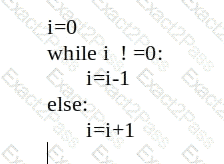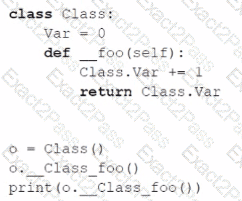Last Update 15 hours ago Total Questions : 154
The Certified Associate in Python Programming content is now fully updated, with all current exam questions added 15 hours ago. Deciding to include PCAP-31-03 practice exam questions in your study plan goes far beyond basic test preparation.
You'll find that our PCAP-31-03 exam questions frequently feature detailed scenarios and practical problem-solving exercises that directly mirror industry challenges. Engaging with these PCAP-31-03 sample sets allows you to effectively manage your time and pace yourself, giving you the ability to finish any Certified Associate in Python Programming practice test comfortably within the allotted time.
Assuming that the code below has been executed successfully, which of the following expressions will always evaluate to True? (Select two answers)
import random
v1 = random. random()
v2 = random. random()
What will be the value of the i variable when the while e loop finishes its execution?

What is the expected behavior of the following code?

The__bases__property contains:
You are going to read just one character from a stream called s. Which statement would you use?
Which line can be used instead of the comment to cause the snippet to produce the following expected output? (Select two answers)
Expected output:
1 2 3
Code:

What is the expected behavior of the following code?


